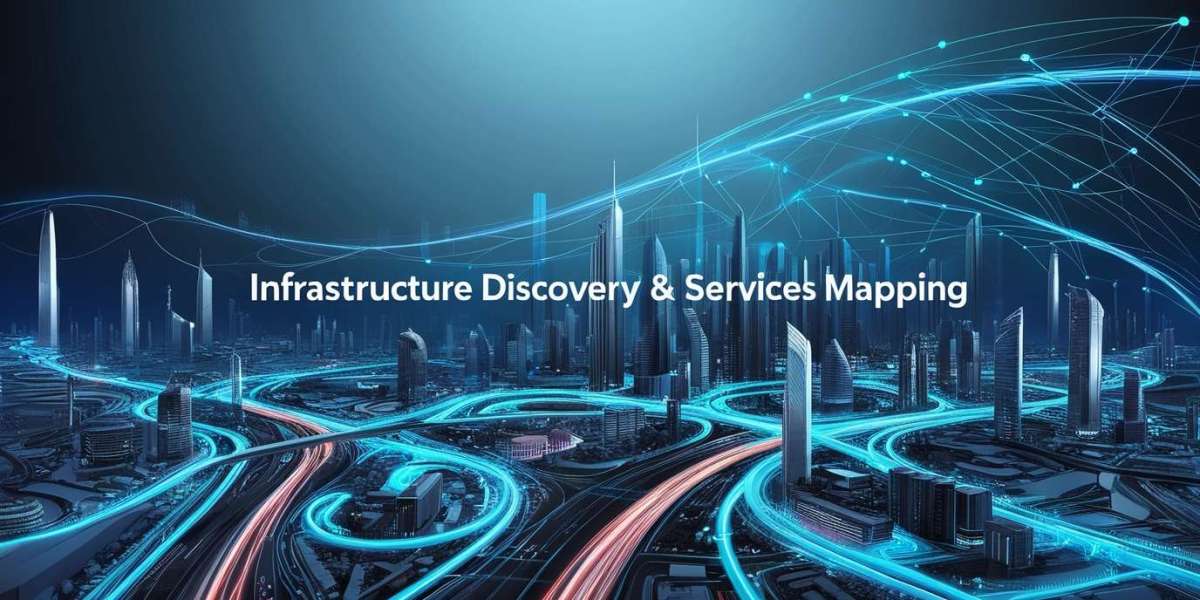In today’s fast-paced digital environment, organizations rely on increasingly complex IT infrastructures to support critical business functions. From on-premises data centers and cloud environments to hybrid systems, understanding what exists across your infrastructure—and how everything connects—is essential.
Enter Infrastructure Discovery & Services Mapping (IDSM), a process that enables businesses to gain full visibility into their IT environment. Whether you're aiming for enhanced incident resolution, a stronger security posture, or streamlined operations, IDSM is the foundation for effective IT management.
What Is Infrastructure Discovery & Services Mapping?
Infrastructure discovery involves automatically detecting and inventorying all IT assets within a network—including servers, virtual machines, routers, databases, applications, and cloud resources. This process answers the “What do we have?” question.
Services mapping then visualizes how those assets interact and deliver services. It answers the critical question, “How are things connected and working together?”
Together, they provide a real-time blueprint of your IT ecosystem, showing both the technical infrastructure and the business services that depend on it.
Why Is It Important?
With sprawling hybrid environments, manual tracking is nearly impossible. Here’s why infrastructure discovery and service mapping are vital:
1. Complete Visibility
Gain an accurate inventory of your assets across physical, virtual, and cloud environments.
- Faster Incident Resolution
Service mapping helps IT teams quickly identify the root cause of issues by visualizing dependencies.
3. Enhanced Change Management
Knowing what’s connected allows teams to predict the impact of changes before they happen.
4. Improved Security
Identify rogue devices, unpatched systems, and configuration drift across your environment.
5. Audit & Compliance Readiness
Real-time discovery and logs simplify compliance with frameworks like ISO 27001, HIPAA, and PCI-DSS.
Request a quote at https://ess.net.in/infrastrasture-discovery-service-mapping/.
How Does Infrastructure Discovery Work?
Modern discovery tools use a mix of methods to scan your environment:
1. Credentialed Scanning
Authenticates with systems to gather deep insights like installed software, patch level, and configurations.
2. Network Probing
Uses protocols like SNMP, WMI, SSH, or APIs to scan IP ranges and detect active devices.
3. Cloud API Integration
Connects with AWS, Azure, or GCP APIs to map cloud-native resources, including serverless services and containers.
4. Agent-Based Discovery
Lightweight agents on endpoints report status and inventory continuously—useful for remote or offline devices.
What Is Services Mapping and Why It Matters
Services mapping builds upon discovered infrastructure data to map out dependencies between applications, servers, databases, and other components.
For example:
A customer-facing application might rely on
- A front-end web server
- A back-end API
- A SQL database
- Load balancers
- External payment gateways
If the API goes down, service mapping shows exactly which applications will be impacted, enabling a proactive response.
Key Components of Services Mapping
- Application Dependency Mapping (ADM): Understand what services rely on which infrastructure elements.
- Dynamic Topology Maps: Real-time visual representation of services, dependencies, and traffic flows.
- Change Tracking: Identify when changes occur and correlate them with incidents or performance shifts.
- Tagging & Grouping: Organize resources by business service, owner, location, or compliance category.
Tools for Infrastructure Discovery & Services Mapping
Several enterprise-grade platforms offer powerful IDSM capabilities:
- ServiceNowDiscovery & Service Mapping
- Dynatrace Application & Infrastructure Monitoring
- SolarWinds Network Performance Monitor (NPM)
- Device42
- BMC Helix Discovery
- ManageEngine OpManager
- Datadog Infrastructure Monitoring
These tools often integrate with Configuration Management Databases (CMDBs), ticketing systems, and security platforms for unified IT visibility.
Use Cases Across the Business
IT Operations
- Proactively resolve incidents
- Optimize resource allocation
- Reduce downtime with better root-cause analysis
Cybersecurity
- Detect unauthorized assets
- Monitor unpatched systems
- Improve network segmentation and compliance
Digital Transformation
- Enable smooth cloud migration
- Eliminate redundant or legacy assets
- Accelerate DevOps through automated provisioning
Compliance & Audits
- Maintain up-to-date records
- Prove system integrity
- Simplify evidence gathering
Contact us at https://ess.net.in/contact/.
Challenges Without Proper Discovery & Mapping
- Shadow IT: Unknown devices or apps create security and compliance risks.
- Extended Downtime: Without clear service dependencies, root-cause analysis takes too long.
- Inefficient Planning: Cloud migrations or upgrades are delayed due to asset blind spots.
- Compliance Failures: Auditors flag missing documentation or lack of visibility.
Best Practices for Implementing IDSM
- Start Small, Scale Fast: Begin with critical services and expand your discovery gradually.
- Use Credentialed Scans: Deeper insights lead to better mapping accuracy.
- Integrate with CMDB: Keep your configuration data clean and up-to-date.
- Automate Updates: Schedule recurring scans to ensure real-time visibility.
- Train Teams on Interpretation: Make sure staff understands how to act on mapping insights.
The Future of Infrastructure Discovery & Services Mapping
The next evolution of IDSM includes:
- AI-Powered Discovery Engines
- Self-Healing Infrastructure via auto-remediation
- Cloud-Native Observability Tools
- Security Context Mapping for zero-trust enforcement
- Integration with AIOps Platforms for smarter automation
Infrastructure Discovery & Services Mapping is no longer a luxury—it's a necessity for any organization with complex IT systems. With the right tools and strategy, IDSM delivers real-time visibility, boosts efficiency, enhances security, and ensures smooth delivery of business services.
By investing in IDSM, businesses take a major step toward proactive IT operations, digital resilience, and future-readiness.
About us
At ESS, we understand the intricate demands of the modern business landscape. As a premier enterprise IT solutions company, we are committed to empowering organizations with cutting-edge technology and innovative solutions. Our mission is to seamlessly integrate technology into your business processes, ensuring efficiency, scalability, and long-term success.
OUR CONTACT



